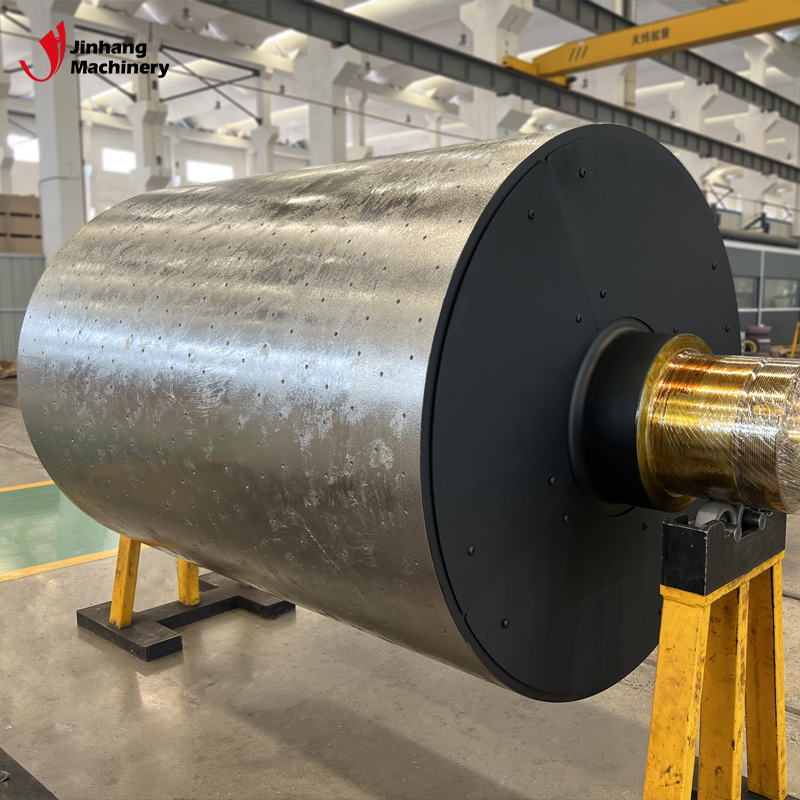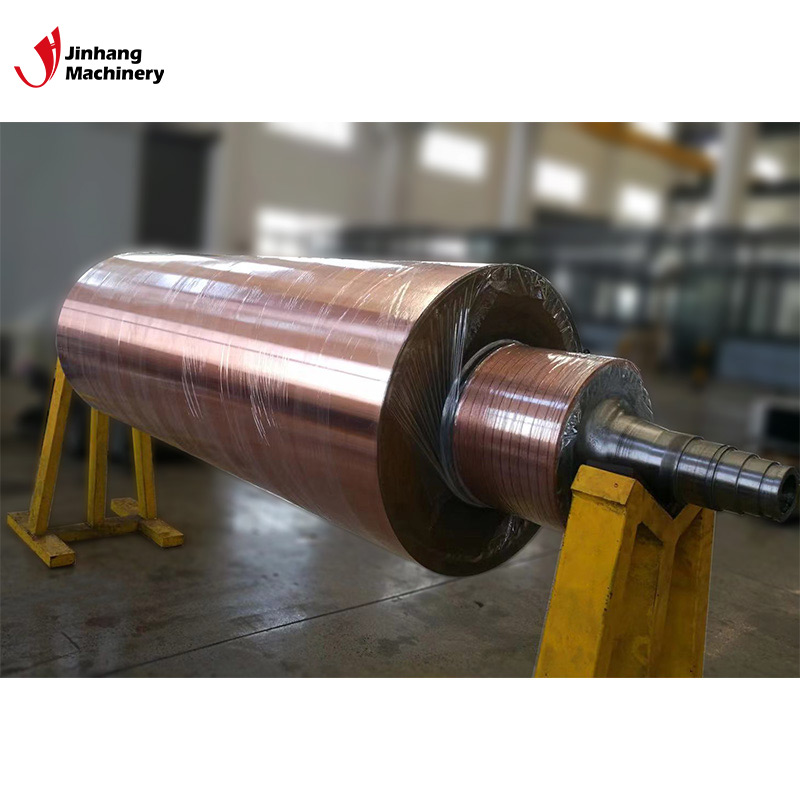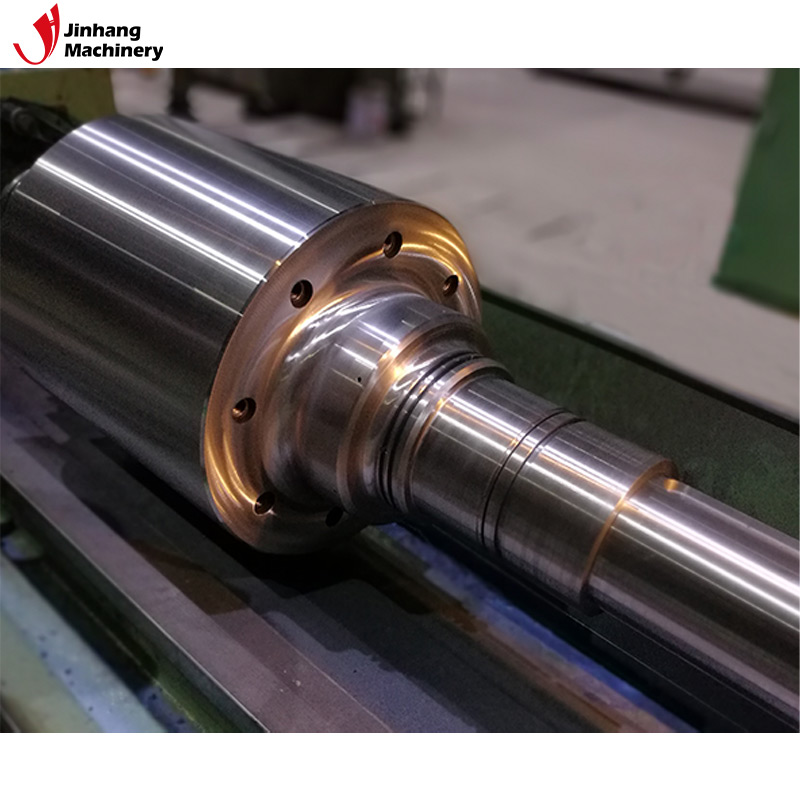Can vinegar remove rust from chrome-plated stainless steel rollers?
In the industrial field, rollers are widely used in steel, papermaking, plastics, rubber and other industries as core components for bearing, transmission and processing. Stainless steel has become the preferred material for many industrial rollers due to its good corrosion resistance, oxidation resistance and mechanical properties. However, in the long-term use process, especially in extreme environments, stainless steel rollers may still corrode or rust, especially when the chrome plating on the roller surface is damaged, the iron of the substrate may be exposed, leading to the formation of rust. At this time, how to effectively remove the rust on chrome-plated stainless steel rollers has become an important issue in many industrial production.
Among the many rust removal methods, using vinegar to remove rust is a widely mentioned natural, simple and low-cost solution. So, can vinegar really effectively remove rust from chrome-plated stainless steel rollers? What issues should be paid attention to in the process of using vinegar to remove rust? This article will discuss the chemical properties of vinegar, the structure of stainless steel rollers, the principles and precautions of vinegar rust removal, and provide readers with scientific and comprehensive answers.

What is the principle of vinegar rust removal?
Vinegar is a common acidic substance, the main component of which is acetic acid (CH₃COOH). The pH value of vinegar is usually between 2 and 3, which is a weak acidic liquid. Acetic acid has a strong dissolving ability and can react chemically with oxides or rust on the metal surface, thereby dissolving or decomposing these substances. Rust is mainly iron oxide (Fe₂O₃) formed by the reaction of iron and oxygen, and its appearance is red or brown. When acetic acid reacts with iron oxide, some soluble substances are produced, which then remove the rust from the metal surface.
Specifically, acetic acid reacts with the oxide in rust as follows: Fe2O3+6CH3COOH→2Fe(CH3COO)3+3H2O
Through this reaction, acetic acid can decompose the iron element in iron oxide and convert it into soluble iron acetate, thereby achieving the effect of removing rust.
Although acetic acid has a certain ability to remove rust, its effect is usually suitable for lighter rust, especially for iron objects or tools with lighter surface rust, the effect is particularly significant. However, for chrome-plated stainless steel rollers, the situation is much more complicated, especially when it comes to the interaction between the chrome coating and the substrate.

Construction and rust types of chrome-plated stainless steel rollers
Stainless steel rollers are usually made of stainless steel materials, which have strong corrosion resistance and can resist the erosion of moisture, oxygen and most acid and alkali substances in the air. In some high-demand industrial applications, chrome plating is often used to strengthen the surface of stainless steel to further improve its wear resistance, oxidation resistance and corrosion resistance. The role of chrome plating is to prevent oxidation corrosion of the substrate metal, while increasing the hardness of the surface and extending the service life.
However, chrome plating is not completely immune to corrosion. Under the influence of high temperature, high humidity, chemical media or physical friction, chrome plating may crack, peel or be damaged. When the chrome layer is damaged, the iron part of the substrate is exposed, which is prone to oxidation reaction and rust. At this time, how to effectively remove the rust on the surface of stainless steel rollers becomes an important issue.
1. Formation of surface rust
Rust on the surface of stainless steel rollers is usually due to damage or corrosion of the chrome coating. Once the chromium layer is damaged, corrosive substances such as moisture and oxygen in the air will easily react with the iron matrix to form iron oxide. The formation of rust not only affects the appearance of the roller, but also further damages the metal surface and affects its performance.
2. Reaction of chromium layer and rust
The chemical properties of the chrome plating enable it to prevent the formation of rust to a certain extent, but when the plating is damaged, the iron part of the substrate exposed reacts with oxygen to generate iron oxide, which will cause the appearance of rust. At this time, the chrome plating does not participate in the direct rust removal process, so how to remove rust mainly depends on the ability to remove iron oxide.
Can vinegar remove rust from chrome-plated stainless steel rollers?
In actual operation, vinegar can indeed remove rust on the surface of stainless steel, especially in the case of mild rust. However, for chrome-plated stainless steel rollers, several factors need to be considered when using vinegar to remove rust:
1. The effect of vinegar's corrosiveness on the chrome plating layer
As a weak acidic substance, acetic acid's main function is to decompose rust by chemically reacting with rust. However, acetic acid itself also has a certain corrosive effect on chrome plating. If vinegar is in contact with the surface of chrome-plated stainless steel rollers for a long time, it may cause some damage to the chrome layer, especially when the concentration of acetic acid is high or the use time is long, which may cause corrosion or peeling of the chrome layer.
Therefore, when using vinegar to remove rust on chrome-plated stainless steel rollers, you must be very careful to avoid long-term contact between vinegar and the chrome layer to avoid irreversible damage to the chrome layer.
2. The effectiveness of vinegar on mild rust
For mild rust on the surface, vinegar can decompose iron oxide by reacting with rust, causing it to fall off the metal surface. This effect is usually suitable for removing weak rust spots or water rust on the surface, but for more stubborn rust or deep rust, the rust removal effect of vinegar may be limited.
3. Cleaning and protection after rust removal
Even if vinegar can remove rust on chrome-plated stainless steel rollers, acetic acid may cause some erosion to the chrome plating during the rust removal process. Therefore, after using vinegar to remove rust, the roller must be thoroughly cleaned in time to remove acetic acid residues and use appropriate protective measures to ensure the integrity of the chrome plating. Common protective measures include reapplying a layer of protective grease or re-chrome-plating the chrome layer.

How to safely and effectively use vinegar to remove rust from chrome-plated stainless steel rollers?
If you choose to use vinegar to remove rust from chrome-plated stainless steel rollers, here are some recommended steps and precautions to ensure that the rust removal process is both safe and efficient:
● Prepare an acetic acid solution of appropriate concentration: Use a diluted white vinegar solution, and the concentration can be adjusted according to the severity of the rust. For mild rust, 50% acetic acid solution is sufficient; for more stubborn rust, the concentration can be appropriately increased, but not more than 80%.
● Apply acetic acid solution locally: Use a soft cloth or sponge to gently apply the acetic acid solution to the rust surface, and avoid the acetic acid solution soaking in the chrome plating for a long time.
● Wait for a short time: Let the acetic acid solution contact the rust for about 10-15 minutes, and observe whether there is obvious rust falling off. For stubborn rust, the contact time can be appropriately extended, but long-term storage should be avoided.
● Rinse thoroughly with clean water: After rust removal, immediately rinse the remaining acetic acid solution on the surface with clean water to prevent further corrosion of the chrome layer by acetic acid.
● Dry and apply a protective layer: After thorough drying, you can consider applying a layer of protective grease or re-treating the chrome layer to enhance the surface protection.
Get Precision Rolls for Your Industrial Needs at JH Machinery
JH Machinery is your go-to supplier for high-quality, customized rolls and cylinders. With our state-of-the-art equipment and ISO 9001 certification, we manufacture precision-engineered rolls for various industries, including the steel, mining, and packaging sectors. Our rolls come in diverse forms, such as tungsten carbide-coated, chrome-plated, and cooling rolls. We offer affordable prices, promotions, and the option for customized designs. If you are looking to purchase rolls at competitive prices, contact us today for more details and quotes from our China-based factory.
